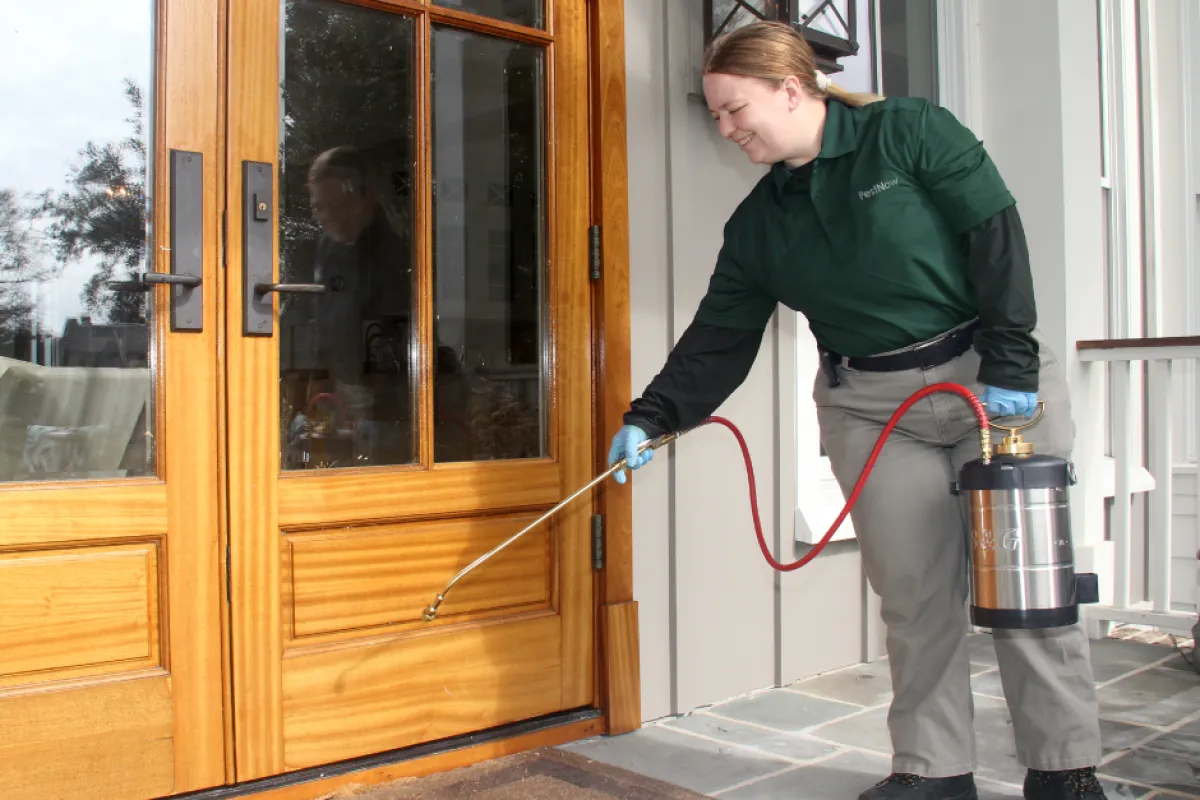A1 Pest Control Charlotte NC Bed Bugs - Specialist Extermination Services
A1 Pest Control Charlotte NC Bed Bugs - Specialist Extermination Services
Blog Article
Bed Pest Treatment Breakdown: Contrasting Chemical Vs. Non-Chemical Solutions
In the realm of parasite control, especially when dealing with the consistent issue of bed insects, the choice between chemical and non-chemical therapy services can be a crucial one. Both strategies use distinct benefits and downsides, influencing elements such as effectiveness, security considerations, and total cost. By taking a look at the nuanced details of each approach, a more clear understanding of which course to go after in resolving a bed pest invasion can be obtained.
Efficiency of Chemical Therapies
Chemical treatments for bed bug infestations have actually been widely acknowledged for their powerful and fast effectiveness in getting rid of these insects. When taking into consideration the performance of chemical therapies, it is essential to recognize that they can provide a comprehensive and fast option to a bed bug trouble.
Moreover, chemical treatments have the benefit of providing residual effects, meaning that they can continue to eliminate bed pests even after the preliminary application. This residual activity is particularly advantageous in combating any type of prospective re-infestations. In addition, the fast action of chemical treatments can bring alleviation to people encountering severe bed bug infestations, permitting them to reclaim control of their space quickly.
Safety Issues With Chemical Solutions
One important aspect that calls for cautious consideration when utilizing chemical options for bed bug treatment is guaranteeing the safety and security of residents and the atmosphere. Direct exposure to specific chemicals used in bed insect therapies can lead to breathing problems, skin inflammation, or other negative reactions, particularly in individuals with pre-existing problems or level of sensitivities.
In addition, the ecological influence of chemical remedies is one more considerable consideration. Some chemicals made use of in bed bug treatments might be dangerous to useful pests, wildlife, and ecosystems if they seep into the dirt or water systems. It is essential to utilize chemical therapies sensibly, following safety standards, and taking into consideration less poisonous choices to alleviate these risks and make sure the effective and safe monitoring of bed bug infestations.
Benefits of Non-Chemical Methods
Taking into consideration the possible safety and security problems and ecological influence related to chemical services for bed bug treatment, checking out non-chemical techniques presents an appealing option with numerous unique advantages. Non-chemical techniques offer a safer choice for homes, especially those with youngsters, animals, or people conscious harsh chemicals. These methods remove the threats of direct exposure to hazardous substances, reducing the possibility for negative health impacts. Furthermore, non-chemical therapies are eco-friendly, as they do not add to air or water air pollution, making them Check This Out a lasting option for parasite control.
In addition, non-chemical options can be reliable in targeting bed bugs, including hard-to-reach areas where chemical therapies may not penetrate. Techniques such as warmth treatment, vacuuming, heavy steam cleansing, and bed mattress encasements supply extensive obliteration without using dangerous chemicals. In addition, non-chemical methods can be much less disruptive, requiring minimal prep work and enabling quicker reentry into dealt with locations. Overall, choosing for non-chemical bed insect treatment methods not just focuses on safety and security and ecological defense however additionally makes certain reliable and detailed pest control.
Limitations of Non-Chemical Treatments

In addition, non-chemical treatments frequently need multiple applications to accomplish effective obliteration. This can be taxing and might not always assure full elimination of all bed bugs and their eggs, specifically in hard-to-reach or covert places.
In addition, the success of non-chemical therapies greatly relies upon proper execution and thoroughness, which can be challenging for individuals without specialist expertise. Poor application of non-chemical approaches might result in incomplete eradication, bring about consistent problems and the demand for extra treatments.
Therefore, while non-chemical therapies have their advantages, investigate this site it is vital to acknowledge these constraints and consider them when determining the most effective method for taking care of bed pest problems.
Expense Contrast: Chemical Vs. Non-Chemical Options
Offered the limitations related to non-chemical therapies, a necessary element to review in the context of bed bug management is the cost comparison between chemical and non-chemical choices. Chemical treatments useful reference usually entail the application of pesticides by professionals, which can range from $250 to $900 per area, depending on the severity of the invasion and the size of the area to be dealt with. In comparison, non-chemical therapies like warm treatment or steam can be a lot more pricey, with costs ranging from $1,000 to $6,000 for a whole home. While the first expense of chemical therapies might seem reduced, several treatments might be required to totally eliminate the problem, possibly increasing the total cost. On the other hand, non-chemical alternatives might give a more green and sustainable solution, although they can be cost-prohibitive for some people. Eventually, when taking into consideration the expense of bed pest treatment options, it is necessary to weigh the upfront expenses versus the performance and long-term sustainability of the selected method.
Conclusion

Taking into consideration the prospective security concerns and ecological influence linked with chemical solutions for bed insect treatment, discovering non-chemical approaches provides a promising option with numerous unique benefits.Offered the restrictions connected with non-chemical treatments, a vital aspect to evaluate in the context of bed insect monitoring is the expense comparison between chemical and non-chemical choices. In comparison, non-chemical treatments like warmth treatment or steam can be more pricey, with expenses ranging from $1,000 to $6,000 for a whole home. While the preliminary price of chemical therapies may appear reduced, multiple therapies might be called for to completely eradicate the problem, potentially enhancing the general expense.In conclusion, when contrasting chemical and non-chemical bed bug treatment alternatives, it is vital to think about efficiency, safety, advantages, restrictions, and price.
Report this page